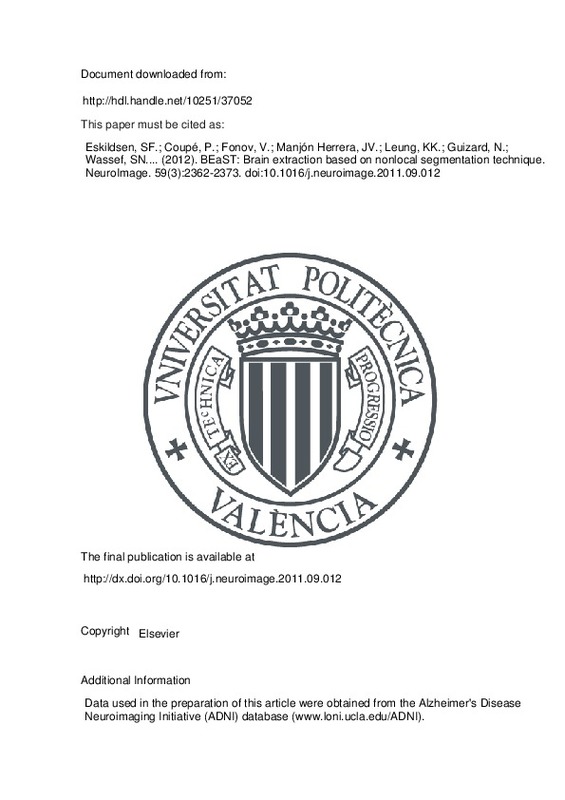JavaScript is disabled for your browser. Some features of this site may not work without it.
Buscar en RiuNet
Listar
Mi cuenta
Estadísticas
Ayuda RiuNet
Admin. UPV
BEaST: Brain extraction based on nonlocal segmentation technique
Mostrar el registro completo del ítem
Eskildsen, SF.; Coupé, P.; Fonov, V.; Manjón Herrera, JV.; Leung, KK.; Guizard, N.; Wassef, SN.... (2012). BEaST: Brain extraction based on nonlocal segmentation technique. NeuroImage. 59(3):2362-2373. https://doi.org/10.1016/j.neuroimage.2011.09.012
Por favor, use este identificador para citar o enlazar este ítem: http://hdl.handle.net/10251/37052
Ficheros en el ítem
Metadatos del ítem
| Título: | BEaST: Brain extraction based on nonlocal segmentation technique | |
| Autor: | Eskildsen, Simon F. Coupé, Pierrick Fonov, Vladimir Leung, Kelvin K. Guizard, Nicolas Wassef, Shafik N. Østergaard, Lasse Riis Collins, D. Louis Alzheimer's Dis Neuroimaging | |
| Entidad UPV: |
|
|
| Fecha difusión: |
|
|
| Resumen: |
Brain extraction is an important step in the analysis of brain images. The variability in brain morphology and the difference in intensity characteristics due to imaging sequences make the development of a general purpose ...[+]
|
|
| Palabras clave: |
|
|
| Derechos de uso: | Reserva de todos los derechos | |
| Fuente: |
|
|
| DOI: |
|
|
| Editorial: |
|
|
| Versión del editor: | http://dx.doi.org/10.1016/j.neuroimage.2011.09.012 | |
| Código del Proyecto: |
...[+] |
|
| Descripción: |
|
|
| Agradecimientos: |
Data collection and sharing for this project was funded by the Alzheimer's Disease Neuroimaging Initiative (ADNI) (National Institutes of Health Grant U01 AG024904). ADNI is funded by the National Institute on Aging, the ...[+]
|
|
| Tipo: |
|







![[Cerrado]](/themes/UPV/images/candado.png)


